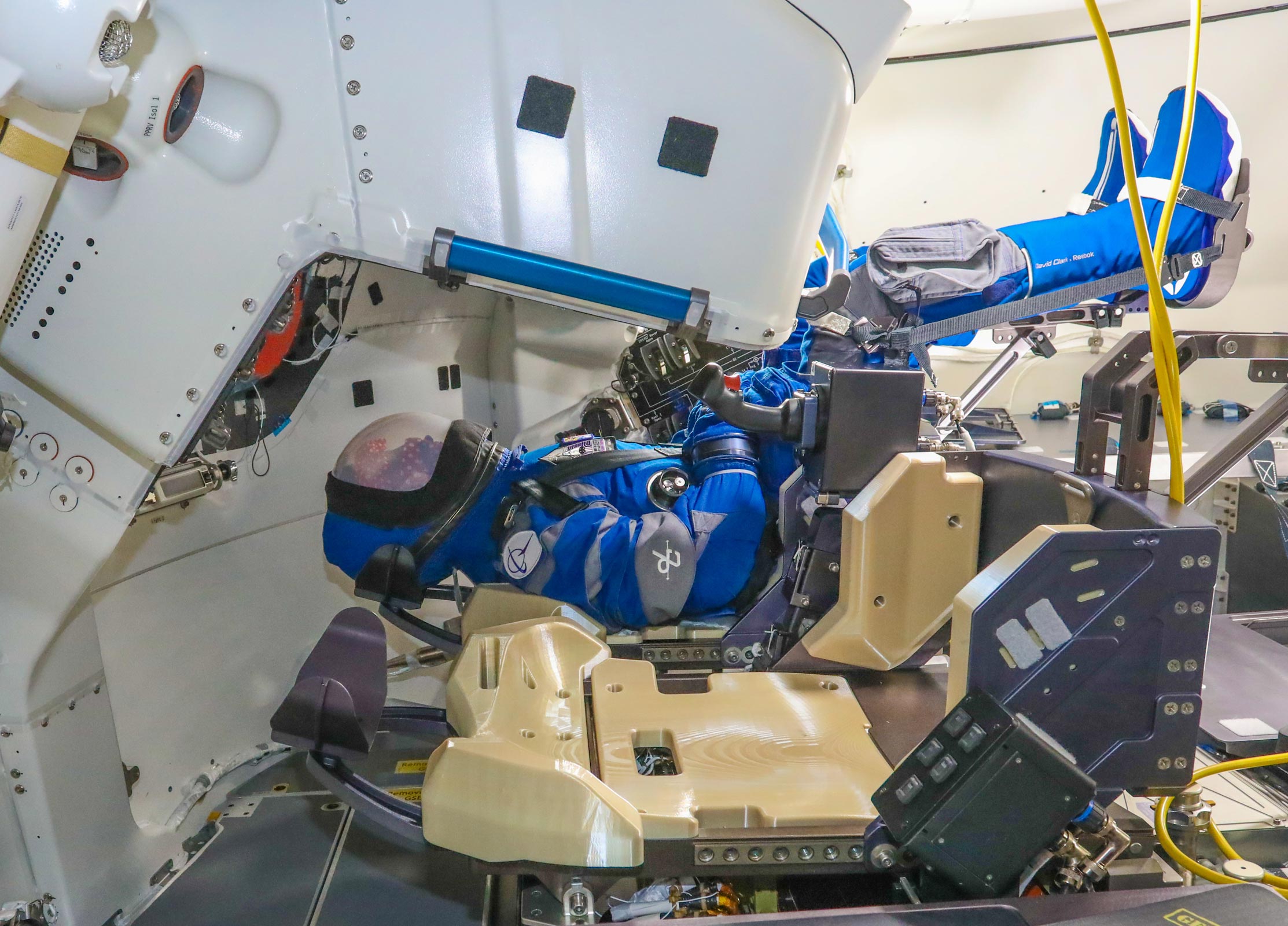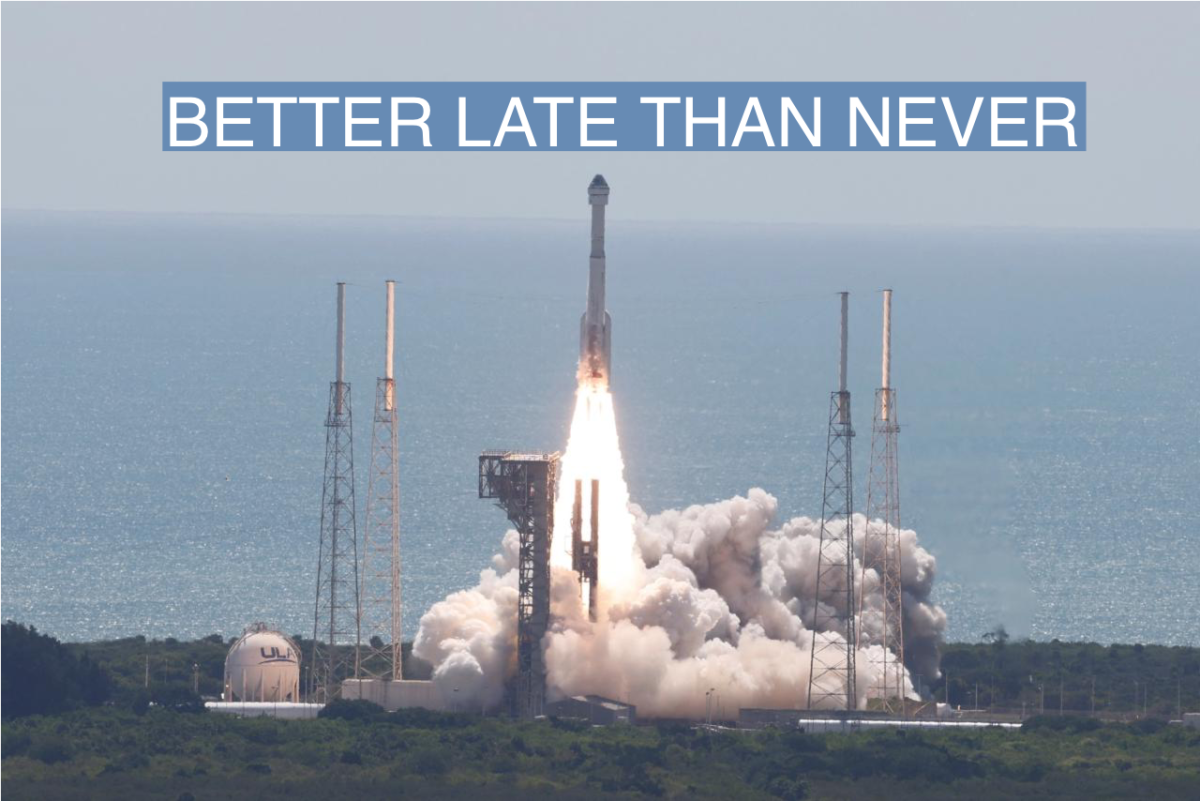NASA and Boeing’s Partnership for Space Exploration

Nasa, boeing starliner launch – NASA and Boeing have a long-standing partnership in space exploration, collaborating on numerous projects and missions. Their partnership dates back to the early days of the space race, when Boeing was selected to build the Saturn V rocket that launched the Apollo missions to the Moon. In recent years, NASA and Boeing have worked together on the development of the Starliner spacecraft, a reusable spacecraft designed to transport astronauts to and from the International Space Station (ISS).
With NASA and Boeing’s Starliner launch inching closer, speculation about the upcoming mission is rife. Amidst the anticipation, the cast of the upcoming Star Wars series, “The Acolyte,” including Amandla Stenberg as Osha, has been announced. Learn more about the cast here.
The Starliner’s launch will mark a significant milestone in space exploration, paving the way for future missions and furthering our understanding of the cosmos.
Key Milestones and Achievements
The partnership between NASA and Boeing has achieved several key milestones and achievements over the years. Some of the most notable milestones include:
- 1961: Boeing is selected to build the Saturn V rocket for the Apollo program.
- 1969: The Saturn V rocket launches the Apollo 11 mission, which lands the first humans on the Moon.
- 2010: NASA awards Boeing a contract to develop the Starliner spacecraft.
- 2019: The Starliner spacecraft completes its first uncrewed test flight to the ISS.
- 2023: The Starliner spacecraft is scheduled to launch its first crewed mission to the ISS.
Shared Goals and Objectives
NASA and Boeing share a number of goals and objectives in space exploration. These include:
- Developing new and innovative spacecraft and technologies.
- Expanding human presence in space.
- Conducting scientific research and exploration.
- Inspiring the next generation of space explorers.
The partnership between NASA and Boeing is a vital part of the United States’ space exploration program. Their collaboration has helped to achieve some of the most significant milestones in human spaceflight, and they continue to work together to push the boundaries of space exploration.
NASA’s recent launch of the Boeing Starliner spacecraft marks a significant milestone in space exploration. However, the importance of this mission extends beyond its scientific objectives. It also highlights the power of human connection and shared aspirations. Just as the Barash Vow unites diverse communities in a common cause, the launch of the Starliner symbolizes our collective desire to reach for the stars and explore the unknown.
Starliner Launch: Nasa, Boeing Starliner Launch
The Boeing Starliner is a reusable spacecraft designed to transport astronauts and cargo to and from the International Space Station (ISS). The Starliner is being developed under NASA’s Commercial Crew Program, which aims to replace the agency’s reliance on Russian Soyuz spacecraft for crew transportation.
The Starliner’s first uncrewed test flight, known as Orbital Flight Test-2 (OFT-2), is scheduled to launch in April 2023. The OFT-2 mission will test the Starliner’s ability to autonomously rendezvous and dock with the ISS, as well as its ability to return to Earth safely.
Starliner Launch: Preparations and Challenges, Nasa, boeing starliner launch
Launch Preparations
The Starliner launch preparations involve a complex process of vehicle assembly, crew training, and mission planning.
| Phase | Description |
|---|---|
| Vehicle Assembly | The Starliner spacecraft is assembled at Boeing’s facility in Florida. The spacecraft consists of a crew module, a service module, and a launch abort system. |
| Crew Training | The Starliner crew, consisting of two astronauts, undergoes extensive training to prepare for the launch and mission. The training includes simulations of all phases of the mission, including launch, rendezvous, docking, and re-entry. |
| Mission Planning | The Starliner mission planning team develops a detailed plan for the launch and mission. The plan includes the launch trajectory, the rendezvous and docking procedures, and the re-entry and landing sequence. |
Technical Challenges
The Starliner has faced a number of technical challenges during its development and testing phases. These challenges include:
- Software glitches: The Starliner’s software has experienced a number of glitches during testing, which have delayed the launch of the OFT-2 mission.
- Propulsion system issues: The Starliner’s propulsion system has also experienced some issues during testing, which have raised concerns about the spacecraft’s ability to safely launch and return to Earth.
- Structural problems: The Starliner’s structure has also been found to have some structural problems, which have required Boeing to make design changes to the spacecraft.
Safety Protocols and Contingency Plans
NASA and Boeing have developed a number of safety protocols and contingency plans to ensure the safety of the Starliner crew. These protocols and plans include:
- Launch abort system: The Starliner is equipped with a launch abort system that can be used to safely abort the launch if there is a problem with the spacecraft or the launch vehicle.
- Redundant systems: The Starliner has a number of redundant systems, which means that if one system fails, another system can take over.
- Contingency plans: NASA and Boeing have developed a number of contingency plans to deal with different types of emergencies that could occur during the launch or mission.
Significance and Implications of the Starliner Launch

The successful launch of Boeing’s Starliner spacecraft marks a significant milestone in the commercial space industry and human space exploration. The mission holds the potential to advance scientific knowledge, technological capabilities, and international collaboration in space.
Scientific and Technological Advancements
The Starliner launch is anticipated to contribute to scientific and technological advancements in the following areas:
- Atmospheric Research: The spacecraft will carry instruments to study Earth’s atmosphere, providing valuable data for weather forecasting and climate modeling.
- Space Environment Monitoring: Starliner will monitor the space environment, collecting data on radiation levels, magnetic fields, and plasma conditions.
- Materials Science: The spacecraft’s materials and design will be tested in the harsh conditions of space, advancing our understanding of material durability and performance.
Impact on Future Space Missions and Human Exploration
The Starliner launch will have a profound impact on future space missions and human exploration beyond Earth’s orbit:
- Commercial Crew Transportation: Starliner is designed to transport astronauts to and from the International Space Station, enabling private companies to participate in space missions.
- Lunar Gateway Support: The spacecraft could potentially support missions to the Lunar Gateway, a planned orbiting outpost around the Moon.
- Deep Space Exploration: Starliner’s capabilities may pave the way for future missions to Mars and other destinations in the solar system.
Broader Implications
The Starliner launch has broader implications for the commercial space industry and international collaboration:
- Commercial Space Industry Growth: The success of Starliner demonstrates the growing capabilities of commercial space companies, opening up new opportunities for innovation and competition.
- International Collaboration: The mission involves collaboration between NASA and Boeing, showcasing the importance of international partnerships in space exploration.
- Public Engagement: The launch has captured public attention, inspiring interest in space exploration and STEM education.
NASA’s much-anticipated Boeing Starliner launch, initially scheduled for July 30th, has been postponed due to technical difficulties. While the exact cause of the delay remains under investigation, the incident highlights the importance of meticulous safety protocols. Similar to the rigorous oversight exercised by OSHA acolytes who ensure workplace safety, the aerospace industry demands an equally vigilant approach to risk mitigation.
As NASA engineers work diligently to resolve the issues, the postponement serves as a reminder that the pursuit of scientific advancement must always be tempered with an unwavering commitment to safety.
The launch of NASA’s Boeing Starliner is a significant milestone in space exploration. As we eagerly anticipate the spacecraft’s journey to the International Space Station, we can also take advantage of the opportunity to delve into the captivating world of “The Acolyte,” a highly anticipated series that explores the dark side of the Star Wars universe.
To immerse yourself in this thrilling tale, simply click on the link: watch the acolyte online free. As we witness the Starliner’s ascent, let us not forget the power of storytelling to transport us to other realms and ignite our imaginations.
As NASA prepares for the historic launch of the Boeing Starliner, it is worth noting the contributions of individuals like Dean-Charles Chapman , whose expertise in aerospace engineering has been instrumental in advancing space exploration. With the Starliner poised to make history, the legacy of those who have dedicated their lives to space travel continues to inspire.
